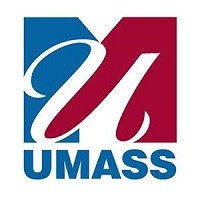
دانلود رایگان پایان نامه ادغام برند و فرهنگ
فصل اول: مقدمه
زمینه
بیان مسئله تحقیق
بیانیه هدف
سوالات تحقیق
اهمیت مسئله
تعاریف
حدود
سازمان مطالعه
فصل دوم: مروری بر ادبیات
بررسی اجمالی
مقدمه
انواع موسسات آموزش عالی ایالات متحده
اختلال در آموزش عالی ایالات متحده
نسل ها
رقابت
اختلال در رهبری
بازاریابی
رهبری بازاریابی
برند سازی
فرهنگ
تلفیق برند و فرهنگ
نظریه فعالیت: یک چارچوب نظری
خلاصه
فصل سوم: روش شناسی
بررسی اجمالی
بیانیه هدف
سوالات تحقیق
طرح پژوهش
جمعیت
جمعیت هدف
نمونه
ابزار دقیق
محقق به عنوان ابزار
اعتبار
قابلیت اطمینان
جمع آوری داده ها
تحلیل داده ها
محدودیت ها
خلاصه
فصل چهارم: تحقیق، گردآوری داده ها و یافته ها
بررسی اجمالی
بیانیه هدف
سوالات تحقیق
روش های تحقیق و روش های گردآوری داده ها
جمعیت
نمونه
اطلاعات دموگرافیک
ارائه و تجزیه و تحلیل داده ها
نظریه فعالیت
سازمان مطالعه
موضوعات اصلی
چالش ها
بهترین شیوه ها
موضوعات غیرمنتظره
خلاصه
فصل پنجم: یافته ها، نتیجه گیری ها و توصیه ها
بررسی اجمالی
بیانیه هدف
سوالات تحقیق
نظریه فعالیت
یافته های اصلی
یافته های غیر منتظره
نتیجه گیری
مفاهیم برای اقدام
توصیه هایی برای تحقیقات آینده
سخنان و تأملات پایانی
منابع
ضمیمه ها
چکیده پایان نامه
هدف: هدف این مطالعه پدیدارشناختی شناسایی و توصیف، از طریق دریچه تئوری فعالیت (AT)، چالشها و بهترین شیوههای مدیران بازاریابی در مؤسسات آموزش عالی خصوصی و غیرانتفاعی در مورد نحوه هدایت همسویی برند و فرهنگ بود.
روششناسی: این مطالعه پدیدارشناختی دادهها را از طریق 15 مصاحبه نیمه ساختاریافته و مجموعهای از مصنوعات جمعآوری، تجزیه و تحلیل و مثلثبندی کرد. سپس داده ها به صورت مضامین کدگذاری شدند، فرکانس ها محاسبه شدند و داده ها در چهار دسته AT سازماندهی شدند: ابزارها، قوانین، جامعه و تقسیم کار.
یافتهها: بررسی دادهها نشان داد که مدیران بازاریابی شش چالش را تجربه کردهاند که هر چهار دسته AT را نشان میدهند و هفت شیوه برتر که سه مورد از چهار دسته AT را نشان میدهند. تقسیم کار و قوانین نشاندهنده مهمترین چالشی است که مدیران بازاریابی تجربه کردهاند، و تقسیم کار مهمترین بهترین روشی بود که از مدیران بازاریابی در راستای همسویی برند و فرهنگ در مؤسسه آموزش عالی غیرانتفاعی خصوصی حمایت میکرد.
نتیجهگیری: بر اساس یافتهها و ادبیات این مطالعه، 9 نتیجه گرفته شد که بینش عمیقتری نسبت به چالشها و بهترین شیوههایی که مدیران بازاریابی با همسویی برند و فرهنگ با آنها مواجه شدند، ارائه میدهد. نتایج بر اهمیت اصالت در همسویی برند و فرهنگ، ایجاد روابط مشارکتی فعال با ذینفعان کلیدی، حمایت از رهبران ارشد موسسه، تامین منابع کافی برای تیم بازاریابی و شناخت تخصص آنها تاکید کرد. علاوه بر این، نتیجهگیریها نیاز مدیران بازاریابی را برای ایجاد فعالانه تلاشهای آموزشی برند، از جمله آموزش استخدامهای جدید پس از ورود به سامانه، مشخص کرد.
توصیهها: تحقیقات بیشتری باید برای کشف این پدیده از طریق دریچه سایر جمعیتها مانند معاونان بازاریابی، اساتید و دانشجویان انجام شود. علاوه بر این، اکنون که چالشها و بهترین شیوهها شناسایی شدهاند، بررسی عمیقتر در این موارد برای تعریف بیشتر این پدیده مفید خواهد بود.
ABSTRACT OF DISSERTATION
Purpose: The purpose of this phenomenological study was to identify and describe, through the lens of activity theory (AT), the challenges and best practices of marketing directors at private, non-profit higher education institutions on how they lead brand and culture alignment.
Methodology: This phenomenological study collected, analyzed, and triangulated data through 15 semi-structured interviews and the collection of artifacts. Data was then coded into themes, frequencies were calculated, and data was organized into the four categories of AT: tools, rules, community, and division of labor.
Findings: Examination of the data found that marketing directors experienced six challenges representing all four AT categories and seven best practices representing three out of the four AT categories. Division of labor and rules represented the most significant challenge marketing directors experienced, and division of labor was the most significant best practice that supported marketing directors leading brand and culture alignment at their private non-profit higher education institution.
Conclusions: Based on the findings and literature of this study, nine conclusions were drawn that offer deeper insight into the challenges and best practices marketing directors encountered as they led brand and culture alignment. The conclusions underscored the importance of authenticity in brand and culture alignment, of proactively building collaborative relationships with key stakeholders, of support from the institution’s most senior leaders, of providing the marketing team with sufficient resources and recognizing their expertise. In addition, the conclusions identified the need for marketing directors to proactively build brand education efforts, including educating new hires upon onboarding.
Recommendations: Further research should be conducted to explore this phenomenon through the lens of other populations, such as vice presidents of marketing, faculty and students. In addition, now that challenges and best practices have been identified, a deeper dive into these items would be beneficial to further define this phenomena.
CHAPTER I: INTRODUCTION
Background
Statement of Research Problem
Purpose Statement
Research Questions
Significance of Problem
Definitions
Delimitations
Organization of Study
CHAPTER II: REVIEW OF THE LITERATURE
Overview
Introduction
Types of United States Higher Education Institutions
Disruption in United States Higher Education
Generations
Competition
Disruption in Leadership
Marketing
Marketing Leadership
Branding
Culture
Brand and Culture Fusion
Activity Theory: A Theoretical Framework
Summary
CHAPTER III: METHODOLOGY
Overview
Purpose Statement
Research Questions
Research Design
Population
Target Population
Sample
Instrumentation
Researcher as the Instrument
Validity
Reliability
Data Collection
Data Analysis
Limitations
Summary
CHAPTER IV: RESEARCH, DATA COLLECTION, AND FINDINGS
Overview
Purpose Statement
Research Questions
Research Methods and Data Collection Procedures
Population
Sample
Demographic Data
Presentation and Analysis of Data
Activity Theory
Organization of the Study
Major Themes
Challenges
Best Practices
Unexpected Themes
Summary
CHAPTER V: FINDINGS, CONCLUSIONS, AND RECOMMENDATIONS
Overview
Purpose Statement
Research Questions
Activity Theory
Major Findings
Unexpected Findings
Conclusions
Implications for Action
Recommendations for Future Research
Concluding Remarks and Reflections
REFERENCES
APPENDICES
